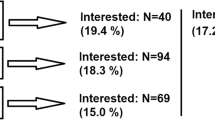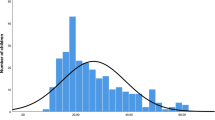Abstract
The impact of high environmental lead levels on public health is currently under much debate. Such a situation exists in two former lead mining villages set in the Southern Uplands of Scotland, where the environment is heavily contaminated through past mining activity. A survey was conducted based on representative samples of male and female adults and of all children living in the area, to examine the distribution of blood lead levels and to compare this with the distribution in residents in a control area. Possible routes of exposure including the determination of lead in domestic water, in house dust, in airborne dust, on food preparation surfaces, on hands, in garden soils and through home grown vegetable consumption were investigated. The results indicate that there is a general increase in lead exposure in environmental variables in the contaminated area, while blood lead levels show an excess of between 45 and 70 percent compared with the control. The determinants of blood lead are discussed through correlation and multiple regression analysis.
Similar content being viewed by others
References
Barltrop, D., Strehlow, C.D., Thomton, I. and Webb J.S. 1975. Absorption of lead from dust and soil.Postgraduate Medical Journal, pp.801–804.
Davies, B.E., Elwood P.C., Gallacher, J. and Ginnever, R.C. 1985. The relationship between heavy metals in garden soil and house dusts in an old mining area of North Wales, Great Britain.Environmental Pollution (series B),9, 1–12.
Davies, B.E. and White, H.M. 1981. Environmental pollution by wind blown lead mine waste: A case study in Wales, UK.The Science of the Total Environment,20, 57–74.
Department of the Environment 1977. Lead in drinking water: a survey of Great Britain 1975–1976 (Pollution Paper No. 12). HMSO, London.
Department of the Environment 1980. Report of the Expert Advisory Group on Identification and Monitoring: Technical Note 1, Lead in potable water. DOE, London.
Department of the Environment 1981. European Community Screening Programme for Lead: United Kingdom results for 1979–1980. Pollution Report No. 10. DOE, London.
Department of the Environment 1982. The Glasgow Duplicate Diet Study (1970–1980). Pollution Report No. 11. DOE, London.
Elwood, P.C., Gallacher, J.E.J., Philips, K.M., Davies, B.E. and Toothill, C. 1984. Greater contribution to blood lead from water than from air.Nature,310, 5973.
Gallacher, J.E.J., Elwood, P.C., Philips, K.M., Davies, B.E. and Jones, D.T. 1984. Relation between pica and blood lead in areas of differing lead exposure.Archives of Disease in Childhood,59(1), 40–44.
Goodman, G.T., Smith, S. and Laskip, M.S. 1975. Mossbag as indicators of airbome metals — an evaluation.Report of a collaborative study on certain elements in air, soil, plants, animals and humans in the Swansea — Neath — Port Talbot area, Chapter 7, pp. 267–342. Welsh Office, Cardiff.
Landrigan, P.S.et al. 1975. Epidemic lead absorption near an ore smelter — The role of particulate lead.New England J. Medicine,292, 123.
Moffat, W.E. 1982. An investigation into the problem of “lead poisoning” in sheep grazing in a former lead mining area of Scotland. Unpublished.
Moore, M., Meredith, P.A., Campbell, B.C., Goldberg, A. and Pocock, S.J. 1977. Contribution of lead in drinking water to blood lead. Lancet,ii, 661–662.
Official Journal of the European Communities. L229, 30 August, 1980.
Sayre, J.W., Chamey, E., Vostal, J. and Pless, I.B. 1974. House and hand dust as a potential source of childhood lead exposure.American Journal Diseases in Children,127, 167–170.
Sherlock, J., Smart, G., Forbes, G.I., Moore, M.R., Patterson, W.J., Richards, W.N. and Wilson, T.S. 1982. Assessment of lead intakes and dose-response for a population in Ayr exposed to a plumbsolvent water supply.Human Toxicology,1, 115–122.
Stark, A.D., Quah, R.F., Meigs, J.W. and DeLouise, E.R. 1982. The relationship of environmental lead to blood-lead levels in children.Environmental Research,27, 372–383.
Stoeppler, M., Brandt, K. and Rains, T.C. 1978. Contributions to automated trace analysis. Part II: Rapid method for the automated determination of lead in whole blood by electrothermal atomic absorption spectrophotometry.Analyst,103, 714.
World Health Organization 1977. Environmental Health Criteria 3,Lead. WHO, Geneve.
Yankel, A.J., von Lindern, I.H. and Walter, S.D. 1977. The Silver Valley Lead Study: The relationship between childhood blood lead levels and environmental exposure.Journal of the Air Pollution Control Association,27, 763–767.
Author information
Authors and Affiliations
Rights and permissions
About this article
Cite this article
Moffat, W.E. Blood lead determinants of a population living in a former lead mining area in Southern Scotland. Environ Geochem Health 11, 3–9 (1989). https://doi.org/10.1007/BF01772066
Received:
Accepted:
Issue Date:
DOI: https://doi.org/10.1007/BF01772066




